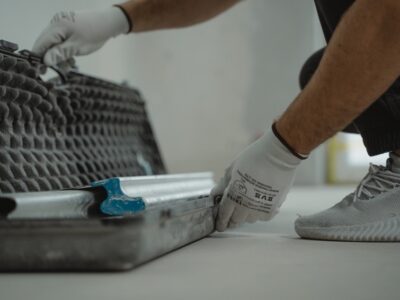
Knowing the different possibilities used in a project is essential to achieving good functionality and aesthetics. Porcelain, marble, and granite may have some similarities, but it is necessary to differentiate them to ensure a good choice for the final environment.
Sometimes, after spending a considerable amount of the budget on other parts of the work, more popular products are chosen to compensate for the previous expenses. However, these savings are not always worth it. Depending on how the environment will be used and the aesthetic effect sought, a cheaper coating ends up not paying off.
To choose correctly, the first thing to consider is the function of the place covered and who will use that space. This makes it easier to define essential aspects, such as the type of floor, finish, and style. This article will talk about porcelain tile, marble, and granite to help you choose the most suitable for your work.
Granite
Granite is not as expensive as marble and is a great choice if looking for durability. It is not very porous; it hardly absorbs water, so it does not stain easily. Its composition (feldspar, quartz such as cascade white quartz, and mica) makes it resistant to scratches and chemical and abrasive wear and can be used indoors or out.
There is the possibility of renovating the floor, for example, just polishing the surface without changing the entire coating. This is to remove stains or restore the original shine. It also brings practicality, as you only need a damp cloth and mild soap to clean it.
Granite floors don’t always have to be the same throughout the house, but there should be something in common between the rooms. Different pieces can have matching colors, or you can use sills to transition from one area to the next, so the change is more subtle.
In integrated environments, such as an American kitchen, the idea is to use the same floor for the entire length, ensuring the feeling that the space is continuous and large. The larger the size of the pieces, the better their aesthetic effect, as large floors do not need so much grout and give the idea of uniformity.
Remember that it must always be laid with a dry joint because, unlike conventional ceramics, granite does not absorb water from traditional mortar. Therefore, if used, the result will be an uneven and poorly finished floor. The dry joint also prevents swelling and dust from accumulating in the grout.
Porcelain
It is one of the most popular coatings for indoor and outdoor areas.
Porcelain tile, like granite, requires skilled labor in laying. It does not absorb water from ordinary mortar, so preparing dry mortar and grout is necessary. Even needing care in the installation, this coating is very affordable compared to marble or granite. And it still has the advantages of bringing the same air of refinement to the environment and being more resistant than marble in terms of mechanical shocks.
It is a practical floor that can be cleaned with just a soft cloth, water, and neutral soap, without the need for waxes or waterproofing products — as it comes from the factory with a waterproof finish.
Because it is made in different colors, textures, and styles, Porcelain tile also allows a variation in price according to these characteristics. It is easy to find a model that meets your aesthetic needs and fits within the budget of the work. Different batches of a floor may come with slight color variations, so it is always advisable to buy a slightly larger quantity. If you need to change a part, you have a replacement in precisely the same color.
Porcelain tiles, in general, are smooth and slippery floors, except those with a more rustic finish. Therefore, choose these coverings carefully if the environment is heavily used by children, the elderly, or pets, who risk slipping and getting hurt.











